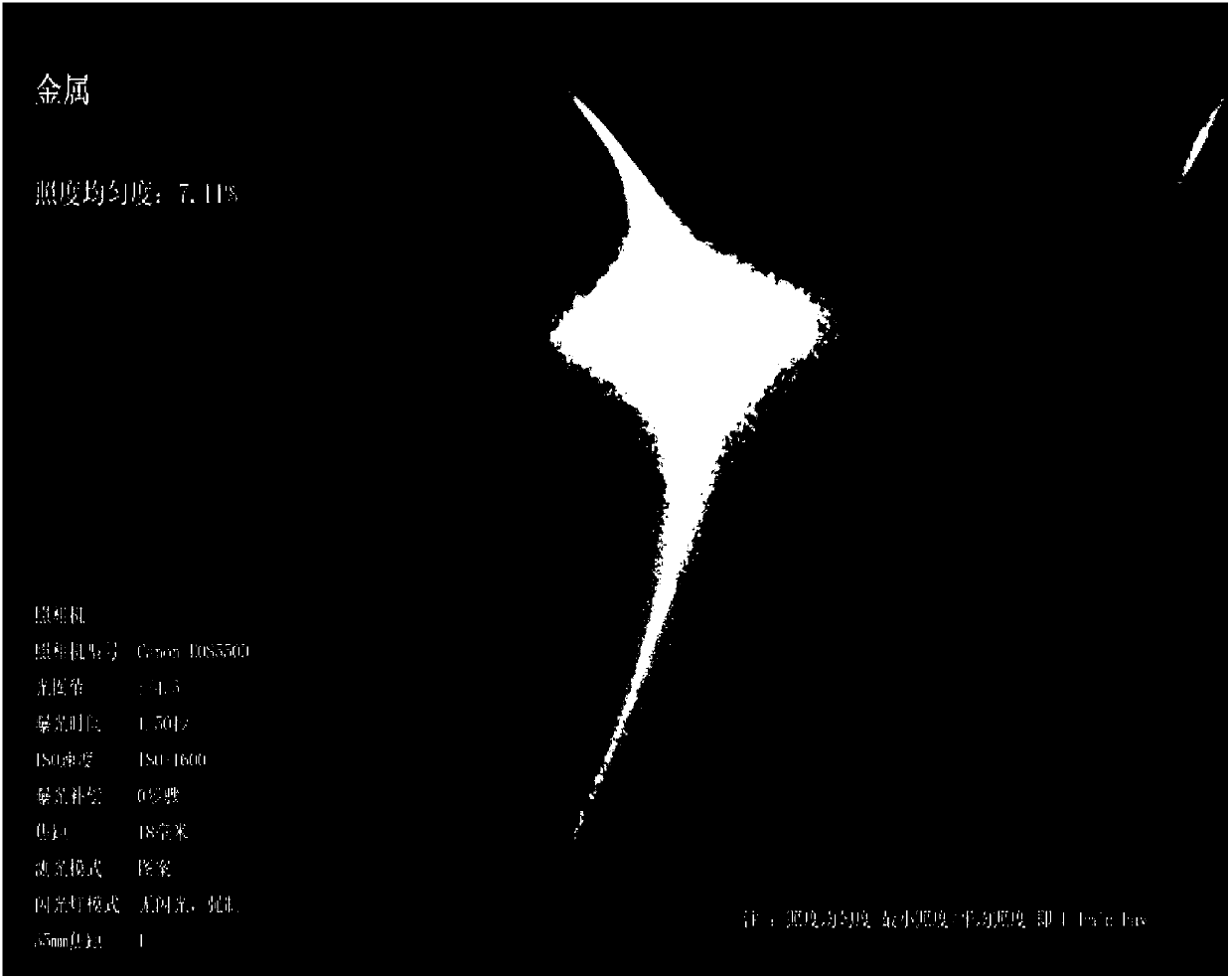Formula and preparation method for polymer diffuse reflection material
A polymer and diffuse reflection technology, applied in the field of optical materials, can solve the problems of complex preparation process, corrosion, and difficulty in realization, and achieve the effect of simple process and continuous production
- Summary
- Abstract
- Description
- Claims
- Application Information
AI Technical Summary
Problems solved by technology
Method used
Image
Examples
Embodiment 1
[0029] Formula: 90 parts of PP, titanium dioxide (TiO 2 ) 5 parts, antioxidant 0.1 part (the mass ratio of 1010 and 168 is 1:1), light stabilizer (JC-790A) 1 part, optical brightener (OB) 0.03 part, paraffin wax 2 parts. The particle size of titanium dioxide is 0.31 microns. Unless otherwise specified, the ratios mentioned below are all mass ratios, the dispersant refers to paraffin, and the particle size of titanium dioxide is 0.31 microns.
[0030] Preparation:
[0031] 1) Preparation of special material for polypropylene diffuse reflection plate
[0032] Polypropylene, titanium dioxide, antioxidant, light stabilizer, fluorescent whitening agent, paraffin wax according to 90 parts, 5 parts, 0.1 parts (the ratio of 1010 and 168 is 1:1), 1 part, 0.03 parts, 2 parts by weight After the proportioning is uniformly mixed in a mixer, melt, knead and granulate in a twin-screw extruder. Twin-screw extruder zone 1 temperature: 175°C, zone 2 temperature: 180°C, zone 3 temperature:...
Embodiment 2
[0038] Formula: PET 90 parts, titanium dioxide (TiO 2 ) 5 parts, antioxidant 0.1 part (the ratio of 1076 and 168 is 1:1), light stabilizer (JC-790A) 1 part, fluorescent whitening agent (OB-1) 0.03 part, paraffin wax 2 parts.
[0039] Preparation:
[0040] Preparation of special materials for PET diffuse reflectors
[0041] PET, titanium dioxide, antioxidant 1076, antioxidant 168, light stabilizer, fluorescent whitening agent and dispersing agent according to the weight ratio of 90 parts, 5 parts, 0.05 parts, 0.05 parts, 1 part, 0.03 parts, 2 After mixing uniformly in a mixer, melt, knead and granulate in a twin-screw extruder. Twin-screw extruder Zone 1 temperature: 220°C, Zone 2 temperature: 230°C, Zone 3 temperature: 240°C, Zone 4 temperature: 250°C, Zone 5 temperature: 250°C, Zone 6 temperature: 250°C, Zone 7 temperature : 250°C, eighth zone temperature: 255°C, ninth zone temperature: 255°C, tenth zone temperature: 255°C, twin-screw speed: 294r / min.
[0042] 2) Preparat...
Embodiment 3
[0047] Polypropylene PP, titanium dioxide TiO 2 , Antioxidant (the ratio of 1076 and 168 is 1:1), light stabilizer JC-790B, fluorescent whitening agent OB, dispersant according to 83.5 parts, 12 parts, 0.4 parts, 2 parts, 0.12 parts, 2 parts by weight After mixing evenly in a mixer, melt and knead in a twin-screw extruder to prepare a premix, and the twin-screw speed is 100r / min. The prepared premix is mixed with the polymer PP at a ratio of 1:3, extruded by a single screw, the speed of the single screw is 70r / min, the temperature of the micro-imprinting double roller is set at 30°C, and the traction speed is 10m / min. min. Other processing steps for preparing the reflecting plate are the same as those in Embodiment 1. The components of the prepared reflectors are listed in Table 3.
[0048] Table three
[0049] PP (parts)
PUM
 Login to View More
Login to View More Abstract
Description
Claims
Application Information
 Login to View More
Login to View More - R&D
- Intellectual Property
- Life Sciences
- Materials
- Tech Scout
- Unparalleled Data Quality
- Higher Quality Content
- 60% Fewer Hallucinations
Browse by: Latest US Patents, China's latest patents, Technical Efficacy Thesaurus, Application Domain, Technology Topic, Popular Technical Reports.
© 2025 PatSnap. All rights reserved.Legal|Privacy policy|Modern Slavery Act Transparency Statement|Sitemap|About US| Contact US: help@patsnap.com



